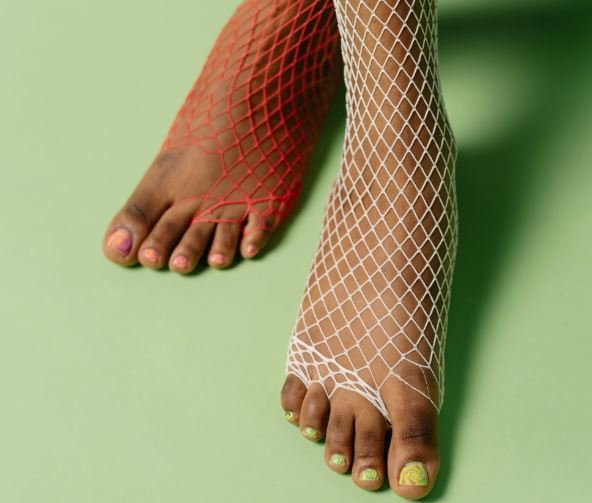Have you ever wondered, “Why do your feet hurt after a foot massage?” You’re not alone. Despite foot massages being famed for their relaxing and therapeutic effects, some find themselves grappling with unexpected foot discomfort post-massage. This surprising twist can be unsettling, particularly when seeking solace and rejuvenation. In this concise guide, we’ll delve into the causes of this post-massage foot pain. From the nuanced techniques of reflexology and Swedish and Shiatsu massages, we explore how these therapies, while beneficial, can sometimes lead to discomfort. Join us as we navigate the complexities of foot therapy, offering insights into why your feet might hurt and how to address it for a more fulfilling massage experience.
Common Causes of Feet Hurting and pain After Massage
A foot massage is usually a ticket to relaxation and relief for many foot-related issues. But sometimes, your feet might become sore or uncomfortable instead of feeling better. Let’s delve into some common reasons behind post-massage foot pain:
- Too Much Pressure, Not Enough Comfort: Feeling discomfort after a foot massage could be due to the pressure applied. We all have different pain thresholds, and what’s soothing for one might be painful for another. Applying too much pressure can leave your muscles sore and worsen any existing foot problems.
- Unveiling Underlying Foot Troubles: If you’re dealing with conditions like plantar fasciitis, arthritis, or bunions, a foot massage might unintentionally worsen these issues. It becomes crucial for your massage therapist to know your medical history to avoid any unexpected pain.
- Sensitivity to Massage Products: The lotions or oils used during a massage can sometimes cause skin irritation or allergic reactions, making your feet uncomfortable. Sharing any allergies or sensitivities with your therapist before the session is vital.
- Muscles and Nerves in Overdrive: Foot massages aim to awaken your foot muscles and nerves. However, too much stimulation can result in brief pain and discomfort, especially for massage newbies. It’s a natural response as your body adjusts to the heightened stimulation.
- The Detox Drama: Massages can unleash stored toxins in your body’s tissues, leading to a detoxification reaction. While this is ultimately good for your body, it can cause temporary discomfort, even in your feet.
Understanding these causes is the first step in tackling and preventing foot pain post-massage.
Read: Best Foot Massager For Swollen Feet
Relieving Feet Pain After a Massage: Effective Strategies
Discovering foot pain after a massage can be unsettling, but fret not—practical methods exist to alleviate this discomfort. Here are some tips to help ease your feet post-massage:
- Give Your Feet a Break: Let your feet rest after your massage. Elevating them can reduce swelling and discomfort, mainly if the pain results from excess pressure or overexertion.
- Cold or Heat Packs: Tailor your approach based on your foot pain. A cold pack can reduce inflammation and numb sore areas, while a warm pack relaxes muscles, improving circulation and relieving stiffness or spasms.
- Hydration for Toxin Flush: Drink plenty of water after your massage. Hydration assists your body in flushing out toxins released during the massage, minimizing potential discomfort in your feet and other areas.
- Gentle Stretching and Movement: Ease muscle tension in your feet with gentle stretching. Simple foot exercises and movements can enhance circulation, helping to alleviate pain and stiffness.
- Over-the-Counter Pain Relief: For significant pain, consider over-the-counter pain relievers. Use them as directed and view them as a short-term solution.
- Consult a Healthcare Professional: If foot pain persists or is severe, seek advice from a healthcare professional. They can offer specific guidance and treatment options if an underlying foot condition contributes to the pain.
Following these steps can effectively manage and reduce foot pain after a massage.
Understanding Personal Pain Thresholds
- Factors Influencing Pain Perception:
- Each person’s journey with foot massages is unique and shaped by personal pain thresholds and sensitivity levels.
- Various factors, including genetics, past injuries, daily activity levels, and psychological factors, such as stress and relaxation levels, influence these thresholds.
- Certain medical conditions, like neuropathic conditions like diabetes or chronic issues like arthritis and plantar fasciitis, can amplify foot sensitivity and influence pain perception during and after a massage.
- Tailoring Massages for Individual Needs:
- Recognizing and respecting these individual variations is paramount for a positive massage experience.
- A cookie-cutter approach won’t cut it for foot massages. Communication with your massage therapist is crucial – openly discuss your pain tolerance and any specific concerns or discomforts.
- Skilled therapists can adapt their techniques, adjusting pressure and strokes to suit your comfort level. Lighter, gentler strokes may serve those with higher sensitivity, while others may benefit from more intense pressure.
- Exploring different types of foot massages can also be beneficial. Reflexology might appeal to those seeking a gentler touch, while deep tissue massage could be more effective for others.
Read: Can You Get a Foot Massage if You Have a Wart?
Conclusion:
In conclusion, while foot massages are generally a source of relaxation and healing, understanding the potential reasons behind occasional foot pain is essential. Factors like excessive pressure, individual sensitivity, and underlying conditions play significant roles. By acknowledging these variables and fostering effective communication with your therapist, you can customize the massage experience to your needs, ensuring comfort and maximizing benefits. Always remember that the key to a genuinely beneficial foot massage lies in understanding and responding to your body’s unique signals.

